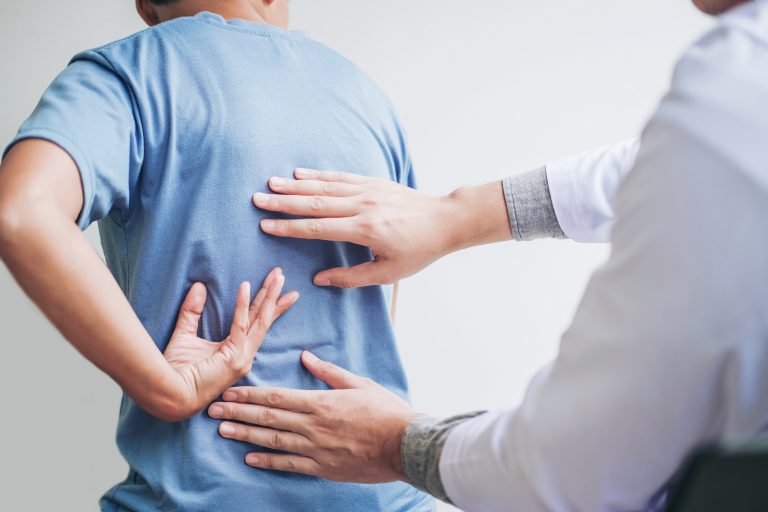Spinal Stenosis Pain
Spinal stenosis pain can originate in the neck or lower back. The symptoms can be extremely disruptive to your normal activities. Many patients report it taking time from family, work, and hobbies. The term stenosis means narrowing, which can be caused in the spinal column by a number of different conditions such as spinal arthritis, thickening of ligaments or a herniated disc. In rare cases, a person can be born with a narrow spinal canal due to heredity, but spinal stenosis is usually caused by age-related changes to the spine.
Spinal Stenosis Symptoms
Spinal stenosis does not always cause painful symptoms. If the narrowing occurs without interfering with the spinal cord or a nerve root, the condition can go undiagnosed for years. If you have been diagnosed with stenosis, then it is most likely because one or more of the following painful symptoms sent you to a doctor for treatment:
- Pain can be a dull ache or a sharp sensation in one location of the neck or back. It can also be felt as tingling or burning that radiates from one spot along the spinal column to other areas of the body, such as the shoulders, hips, buttocks, arms, or legs.
- You may have difficulty walking but will find relief when leaning forward and bracing on an object, such as a walker or shopping cart.
- Spinal stenosis pain can potentially be chronic, severely limiting work- and leisure-related activities.
- Motion can increase pain. This includes bending, twisting, standing, walking, or swinging a golf club, or by repetitive motions like heavy lifting.
- In cases of mild spinal stenosis, pain may be inconsistent. It may not stop you from most activities, but it can slow you down.
In addition to pain, spinal stenosis can cause stiffness in the cervical or in the lumbar regions of the spine. Spinal stenosis can also cause numbness and tingling in the extremities. Other spinal stenosis symptoms include cramping in the legs or arms and possibly headaches and dizziness.
Stenosis, and the pain that comes with it, can affect any part of the spine, but it more commonly affects the lumbar and cervical regions, with thoracic stenosis being rarer. For example, if your pain or other symptoms are in the neck area and you also have difficulty walking, you may have cervical spinal stenosis.
Treatment Options
Contact BEST Health System if you are unable to find relief from spinak stenosis. Our outpatient procedures are a safer and more effective alternative to traditional open spine surgery.
Surgical intervention may be necessary if conservative efforts are ineffective. Through the use of modern technology, surgeons are now able to complete these procedures without the need for large incisions. BEST Health System is the industry leader in minimally invasive care. Even compared to other minimally invasive surgical providers, BEST is setting the blueprint. Contact our team to schedule an appointment or learn more about our services. Put an end to your back pain now and for all.
